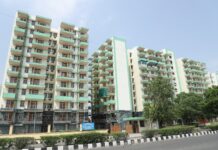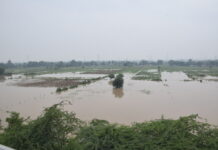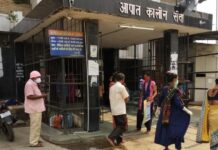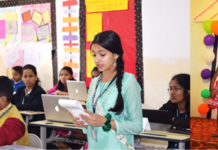[vc_row][vc_column][vc_column_text]
The curse of child malnutrition shows no signs of relaxing its grip on India, in fact, quite the reverse. What’s more, India has slipped two spots and ranks 117 on globally defined parameters like Sustainable Development Goals. And for what it’s worth it is a known fact now that India has slipped below Bangladesh in terms of per capita income. Bangladesh’s per capita income stood at $2,227 for the 2021 financial year against India’s per capita income of $1,947 for the same year.
But first the state of nation’s children up to age six years… The latest figures not reported by the government but ferreted out through the Right to Information (RTI) efforts reveal that more than 9.27 lakh children, just short of one million, are trapped in the Severely Acute Malnourished (SAM) category. As reported year after year Uttar Pradesh and Bihar continue to be the lead sufferers. Nick-named the basket case states of India, the governments of the two states seem to be groping in the dark, already engulfed in the coronavirus pandemic of the last 15 months.
Uttar Pradesh tops the list with 3.98 lakh SAM children, followed by Bihar with 2.79 lakh unfortunate children. The World Health Organization (WHO) defines SAM as children with very low weight-for-height or a mid-upper arm circumference of less than 115mm, or by the presence of edema indicating swollen tissues.
What is alarming is that the SAM children, who have very low weight for their height, are nine times more likely to die of diseases due to their weak immune system.
The Women and Child Development Ministry had asked all states and Union territories last year to identify SAM children for referrals to hospitals, an exercise which led to the estimated 9.27 lakh horrendous count. The fear is that this figure may be an underestimate with a devastating impact in the pandemic era. An equally big cause for concern is the staggering number of children in the vulnerable 0-to-6 year age group. The importance of the first six years in a child’s life cannot be overestimated. Uttar Pradesh alone has 2.97 crore (29.7million or roughly 30 million) children at risk in this category. Bihar follows with a count of 1.85 crore (18.5 million) children in this delicate age group.
The RTI analysis listed Maharashtra with 70, 665 SAM children, followed by Gujarat at 45, 749, Chhattisgarh at 37, 249, Odisha at 15,595, Tamil Nadu at 12, 489, Jharkhand at 12,059, Andhra Pradesh at 11, 201, Telangana at 9,045, Assam at 7,218, Karnataka at 6,899, Kerala at 6,188, and Rajasthan at 5,732. The countrywide exercise was accomplished by a network of more than 10 lakh Anganwadi centres. The figures relate to 2015-16, as year on year data from the National Family Health Survey(NFHS) awaits updating.
Partial figures for NFHS-5 (last December for 22 states and Union territories also revealed a worsening scenario, pointing to a rise in malnutrition among children in children 2019-20 from 2015-16 in 16 pot of 22 states and Union Territories.
Another unflattering picture comes from India’s slide in the global Sustainable Development Goals (SDG) table, falling behind Bangladesh, Bhutan, Nepal and Sri Lanka in the South Asia region. India’s SDG ranking slipped by two places last year to 117 among 193 United Nations member states. The fall was revealed in the State of India’s Environment Report 2021. The decline was attributed to major challenges like ending hunger and achieving food security (SDG 2), achieving gender equality (SDG 5) among other goals.
Incidentally, India’s Niti Ayog, the former Planning Commission, did come out with a performance report of various states about SDGs but failed to highlight India’s two-point slippage in the global league.
The 2030 Agenda for Sustainable Development was adopted by all United Nations member states in 2015 as a long-term blueprint for peace and prosperity for people and the planet in a global partnership. The 17 SDGs adopted by the UN member states include SDG 1 – no poverty; SDG2 – zero hunger; SDG 3 – good health; SDG 4– quality education; SDG 5 – gender equality; SDG 6–clean water and sanitation; SDG 7 – affordable clean energy; SDG 8 – decent work and economic growth; SDG 9 – industry, infrastructure.
Other goals include SDG 10 – reduced inequalities; SDG 11 – sustainable cities and communities; SDG 12 – responsible consumption and production; SDG13–climate action;SDG 14 – life below water; SDG 15 – life on land; SDG 16 – peace, justice and strong institutions; and lastly SDG 17 – strengthening global partnership for goals.
The Environment Report 2021 ranked India at a lowly 168 out of 180 countries in terms of the Environmental Performance Index and at 172 in the Environmental Health category. A long way to go to catch up on primary health issues!
[/vc_column_text][/vc_column][/vc_row]
Disclaimer: We do undertake rigorous checks on content provided by contributors before publishing the same. If you come across some factual errors, kindly bring this into our notice and we shall review your objection and claim as per our policy and display correction credits and corrections on the article itself.
The opinion expressed in the article is of the writer. Writer is a freelance journalist/journalist based in Delhi



























